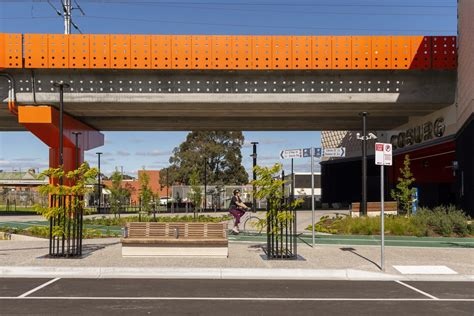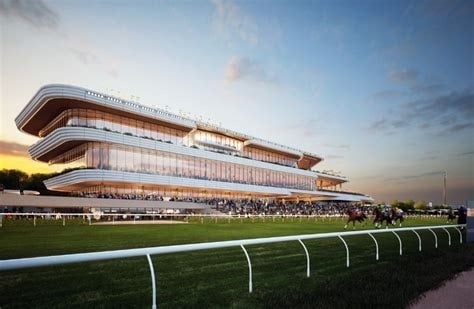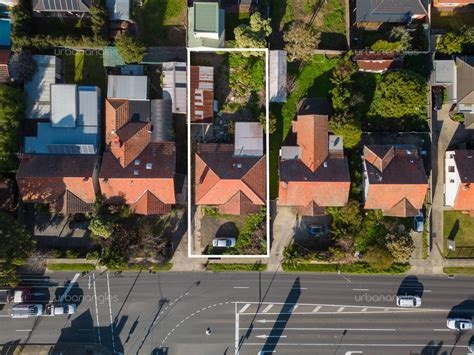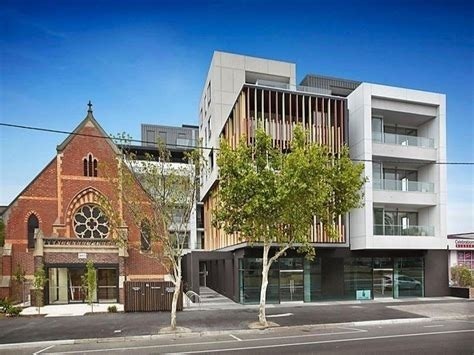Chart Color Schemes
est. as @ -- *
ABS ERP | -- people | --
2021 Census | -- people
Sales Activity
Curious about local property values? Filter the chart to assess the volume and appreciation (including resales) trends and regional comparisons, or scroll to the map below view this information at an individual property level.
Find a Recent Sale
Sales Detail
Population
Essendon - East has seen population growth performance typically on par with national averages when looking at short and medium term trends
Essendon - East's population was approximately 13,027 as of August 2025. This figure represents an increase of 836 people from the 2021 Census total of 12,191. The growth is inferred from ABS estimates: 12,946 in June 2024 and an additional 171 validated new addresses since the Census date. This results in a population density of 3,669 persons per square kilometer, placing Essendon - East in the upper quartile nationally according to AreaSearch's assessments. Over the past decade, ending in 2025, Essendon - East showed resilient growth with a compound annual growth rate of 1.1%, outperforming its SA3 area. Overseas migration drove population growth, contributing approximately 89.8% of overall gains during recent periods.
AreaSearch uses ABS/Geoscience Australia projections for each SA2 area, released in 2024 with a base year of 2022. For areas not covered by this data, AreaSearch employs VIC State Government's Regional/LGA projections from 2023, adjusting using weighted aggregation methods to SA2 levels. Growth rates by age group are applied across all areas for years 2032 to 2041. By 2041, Essendon - East is projected to have a population increase of just below the median statistical area nationally, with an expected growth of 7.9% over 17 years based on latest population numbers.
Frequently Asked Questions - Population
Development
Residential development activity is slightly higher than average within Essendon - East when compared nationally
Essendon - East has recorded approximately 214 residential properties granted approval per year. Development approval data is produced by the ABS on a financial year basis: totalling 1,070 approvals across the past five financial years (from FY-20 to FY-25), and 10 so far in FY-26. On average, only 0.8 people have moved to the area per dwelling built over these five years, indicating that new supply is keeping pace with or exceeding demand, offering ample buyer choice and creating capacity for population growth beyond current forecasts. The average construction cost value of new homes being built is $642,000, slightly above the regional average, suggesting a focus on quality developments.
This financial year has seen $1.7 million in commercial approvals registered, predominantly reflecting residential development. Compared to Greater Melbourne, Essendon - East records roughly half the building activity per person and places among the 65th percentile of areas assessed nationally for new building activity. The location shows a focus on higher-density living: 24.0% standalone homes and 76.0% townhouses or apartments. This shift from the current housing mix (currently 40.0% houses) reflects reduced availability of development sites and addresses shifting lifestyle demands and affordability requirements. With approximately 282 people per dwelling approval, there is room for growth in Essendon - East.
Looking ahead to 2041, the location is expected to grow by 1,032 residents. Based on current development patterns, new housing supply should readily meet demand, offering good conditions for buyers and potentially facilitating population growth beyond current projections.
Frequently Asked Questions - Development
Infrastructure
Essendon - East has very high levels of nearby infrastructure activity, ranking in the top 10% nationally
Changes to local infrastructure significantly influence an area's performance. AreaSearch has identified 14 projects likely to impact the area. Notable ones include Moonee Valley Racing Club Grandstand & Clubhouse Redevelopment, Moonee Valley Park, and LUMA Sunshine North. The following list details those most relevant.
Professional plan users can use the search below to filter and access additional projects.
INFRASTRUCTURE SEARCH
Frequently Asked Questions - Infrastructure
Bell Street to Moreland Level Crossing Removal
Major infrastructure project removing dangerous level crossing at Bell Street and Moreland Road intersection. Construction of road bridge over railway line, improved traffic flow, enhanced pedestrian and cycling infrastructure, and upgraded public transport connectivity.

Buckley Street Level Crossing Removal
Removal of level crossing at Buckley Street, Essendon with new elevated rail bridge. Part of Victoria's Level Crossing Removal Program to improve traffic flow and safety. Includes new landscaping and improved pedestrian access.

Moonee Valley Park
Master-planned urban renewal of the Moonee Valley Racecourse into a mixed-use precinct delivering about 2,000 dwellings across multiple stages, with 20 hectares of open space, retail, hospitality, and community amenities. Current stages include Stonepine House and Trackside House (anticipated Spring 2025 completion) and the launch of The Eveline apartments, alongside ongoing works to the racecourse and precinct amenities.

Moonee Valley Racing Club Grandstand & Clubhouse Redevelopment
A $200 million redevelopment of the iconic Moonee Valley Racecourse featuring a new world-class grandstand, re-oriented racetrack, 83-room boutique residential hotel, rooftop bar, wellness centre, community facilities, and infield activation for community and major events. Designed by Cox Architecture with construction by Camillo Builders, set to become Australia's premier night racing venue.

LUMA Sunshine North
Mixed-use development including residential, commercial, and community spaces in Sunshine North. Part of urban renewal initiative for western Melbourne.

York Street Park (A Park Close to Home) - Pascoe Vale South
Council-led delivery of a new ~2,500 m2 local park on the Westgate/York Street corner as part of Merri-bek's A Park Close to Home program. Demolition finished in early 2024, detailed design and tendering completed by mid 2025. Construction commenced July 2025 with completion targeted for December 2025, weather permitting. Key features include shaded play areas, shelter and picnic facilities, paths, planting and a grassed kick-about area.

Bell Street to Pascoe Vale Road Connection
Part of $1.3 billion CityLink Tulla Widening Project. New 275-metre bridge connecting Bell Street to Pascoe Vale Road over CityLink and Craigieburn train line. Includes dedicated cycling and pedestrian paths.

Mt Alexander Road Intersection Upgrades
Planning is underway for long-term upgrades to two major intersections in Essendon: Mt Alexander Road with Napier, Fletcher, and Russell streets; and Mt Alexander Road with Bulla, Keilor, and Lincoln roads. The project aims to improve safety for road users, enhance traffic flow and network efficiency, and improve active and public transport connections. Community consultation in 2025 received 2044 survey responses, with the top priorities being replacing roundabouts with traffic lights, upgrading existing roundabouts, and providing safer pedestrian and cyclist access. The Victorian Government has announced $6.55 million in the 2025/26 State Budget for interim safety upgrades at the Napier/Fletcher/Russell intersection, including safer pedestrian crossings and clearer line marking. Approximately 63,000 vehicles travel through both intersections daily.

Employment
AreaSearch assessment positions Essendon - East ahead of most Australian regions for employment performance
Essendon - East has an educated workforce with strong representation in professional services. As of June 2025, its unemployment rate is 3.9%, with estimated employment growth of 6.3% over the past year.
In June 2025, 8,495 residents are employed, with an unemployment rate of 3.9%, which is 0.7% below Greater Melbourne's rate of 4.6%. Workforce participation in Essendon - East is 70.9%, compared to Greater Melbourne's 64.1%. Key industries include health care & social assistance, professional & technical services, and education & training. Public administration & safety has notable concentration, with employment levels at 1.4 times the regional average.
Manufacturing shows lower representation at 4.7% versus the regional average of 7.2%. Limited local employment opportunities are indicated by Census working population vs resident population counts. Between June 2024 and June 2025, employment levels increased by 6.3%, labour force by 7.1%, resulting in unemployment rising by 0.7 percentage points. Greater Melbourne recorded employment growth of 3.5% during the same period. State-level data to Sep-25 shows VIC employment grew by 1.08% year-on-year, with a state unemployment rate of 4.7%. National employment forecasts from May 2025 project national growth of 6.6% over five years and 13.7% over ten years. Applying these projections to Essendon - East's employment mix suggests local growth of approximately 6.9% over five years and 14.1% over ten years, though this is a simple weighting extrapolation for illustrative purposes only.
Frequently Asked Questions - Employment
Income
Income metrics indicate excellent economic conditions, with the area achieving higher performance than 75% of national locations assessed by AreaSearch
Essendon - East has exceptionally high national income levels according to latest ATO data aggregated by AreaSearch for financial year 2022. Its median income among taxpayers is $64,453 and average income stands at $105,368. Greater Melbourne's figures are $54,892 and $73,761 respectively. Based on Wage Price Index growth of 10.11% since financial year 2022, current estimates would be approximately $70,969 (median) and $116,021 (average) as of March 2025. According to 2021 Census figures, individual earnings stand out at the 86th percentile nationally ($1,111 weekly). Distribution data shows the $1,500 - 2,999 bracket dominates with 32.3% of residents (4,207 people), mirroring regional levels where 32.8% occupy this bracket. Essendon - East demonstrates considerable affluence with 32.0% earning over $3,000 per week. Housing accounts for 14.8% of income while strong earnings rank residents within the 72nd percentile for disposable income. The area's SEIFA income ranking places it in the 8th decile.
Frequently Asked Questions - Income
Housing
Essendon - East displays a diverse mix of dwelling types, with a higher proportion of rental properties than the broader region
Essendon - East's dwelling structures, as per the latest Census evaluation, consisted of 39.9% houses and 60.1% other dwellings (semi-detached, apartments, 'other' dwellings). In comparison, Melbourne metro had 42.6% houses and 57.4% other dwellings. Home ownership in Essendon - East was at 28.2%, similar to Melbourne metro's level. Remaining dwellings were either mortgaged (29.3%) or rented (42.5%). The median monthly mortgage repayment in the area was $2,167, below Melbourne metro's average of $2,200. Median weekly rent figure was recorded at $371, compared to Melbourne metro's $370. Nationally, Essendon - East's mortgage repayments were higher than the Australian average of $1,863, while rents were lower than the national figure of $375.
Frequently Asked Questions - Housing
Household Composition
Essendon - East features high concentrations of lone person households and group households, with a lower-than-average median household size
Family households constitute 59.1% of all households, including 26.3% couples with children, 24.0% couples without children, and 7.4% single parent families. Non-family households comprise the remaining 40.9%, with lone person households at 36.0% and group households accounting for 4.9%. The median household size is 2.2 people, smaller than the Greater Melbourne average of 2.3.
Frequently Asked Questions - Households
Local Schools & Education
Educational achievement in Essendon - East places it within the top 10% nationally, reflecting strong academic performance and high qualification levels across the community
Educational attainment in Essendon - East is notably high, with 47.8% of residents aged 15 and above holding university qualifications as of the latest data available. This compares to national figures of 30.4% for Australia and 33.4% for Victoria. Bachelor degrees are most common at 30.8%, followed by postgraduate qualifications (12.1%) and graduate diplomas (4.9%). Vocational pathways account for 23.2% of qualifications among those aged 15 and above, with advanced diplomas at 11.1% and certificates at 12.1%.
Educational participation is high, with 28.1% of residents currently enrolled in formal education, including 8.3% in tertiary education, 7.6% in primary education, and 6.5% pursuing secondary education. Essendon - East's five schools have a combined enrollment reaching 2,845 students as of the latest count. The area demonstrates significant socio-educational advantages and academic achievement, with an ICSEA score of 1130. The educational mix includes two primary, one secondary, and two K-12 schools. Essendon - East functions as an education hub with 22.0 school places per 100 residents, significantly above the regional average of 12.5, attracting students from surrounding communities.
Frequently Asked Questions - Education
Schools Detail
Nearby Services & Amenities
Transport
Transport servicing is high compared to other areas nationally based on assessment of service frequency, route connectivity and accessibility
Essendon - East has 85 active transport stops operating within its boundaries. These stops serve a mix of train, light rail, and bus routes. There are 22 individual routes in total, providing 11,516 weekly passenger trips combined.
Residents have excellent transport accessibility, with an average distance of 144 meters to the nearest stop. The service frequency across all routes averages 1,645 trips per day, which equates to approximately 135 weekly trips per individual stop.
Frequently Asked Questions - Transport
Transport Stops Detail
Health
Essendon - East's residents are extremely healthy with both young and old age cohorts seeing low prevalence of common health conditions
Analysis shows Essendon - East performed well on health metrics, with both young and old cohorts having low prevalence of common conditions. Private health cover was high at approximately 74% (9,600 people), compared to Greater Melbourne's 67.2% and the national average of 55.3%. The most prevalent medical conditions were mental health issues (8.4%) and asthma (8.1%), with 71.8% reporting no ailments, similar to Greater Melbourne's 72.0%.
The area has 17.8% residents aged 65 and over (2,318 people), higher than Greater Melbourne's 16.0%. Senior health outcomes align with the general population's profile.
Frequently Asked Questions - Health
Cultural Diversity
Essendon - East was found to be more culturally diverse than the vast majority of local markets in Australia, upon assessment of a range of language and cultural background related metrics
Essendon-East has a higher cultural diversity compared to most local areas, with 26.8% of its residents born overseas and 24.5% speaking a language other than English at home. Christianity is the predominant religion in Essendon-East, making up 53.4% of its population. Notably, Hinduism is overrepresented in Essendon-East compared to Greater Melbourne, with 4.6% versus 3.0%.
The top three ancestry groups are English (20.6%), Australian (17.3%), and Other (10.9%). Some ethnicities show significant differences: Italians are equally represented at 10.2%, Maltese are slightly overrepresented at 1.7%, and Irish are more prevalent at 10.8% compared to regional figures of 10.2%, 1.6%, and 9.8% respectively.
Frequently Asked Questions - Diversity
Age
Essendon - East's population is slightly younger than the national pattern
The median age in Essendon-East is 37 years, matching Greater Melbourne's figure and closely aligning with Australia's median age of 38 years. The 65-74 age group constitutes 10.2% of Essendon-East's population compared to Greater Melbourne, while the 5-14 cohort comprises 9.2%. Between 2021 and present, the 65-74 age group has risen from 9.0% to 10.2%, and the 75-84 cohort increased from 4.2% to 5.3%. Conversely, the 55-64 age group has decreased from 11.9% to 10.9%. By 2041, demographic projections indicate significant shifts in Essendon-East's age structure. The 75-84 group is projected to grow by 75%, reaching 1,220 people from 696. Those aged 65 and above are expected to contribute to 57% of the population growth. Meanwhile, the 0-4 and 25-34 cohorts are anticipated to experience population declines.






